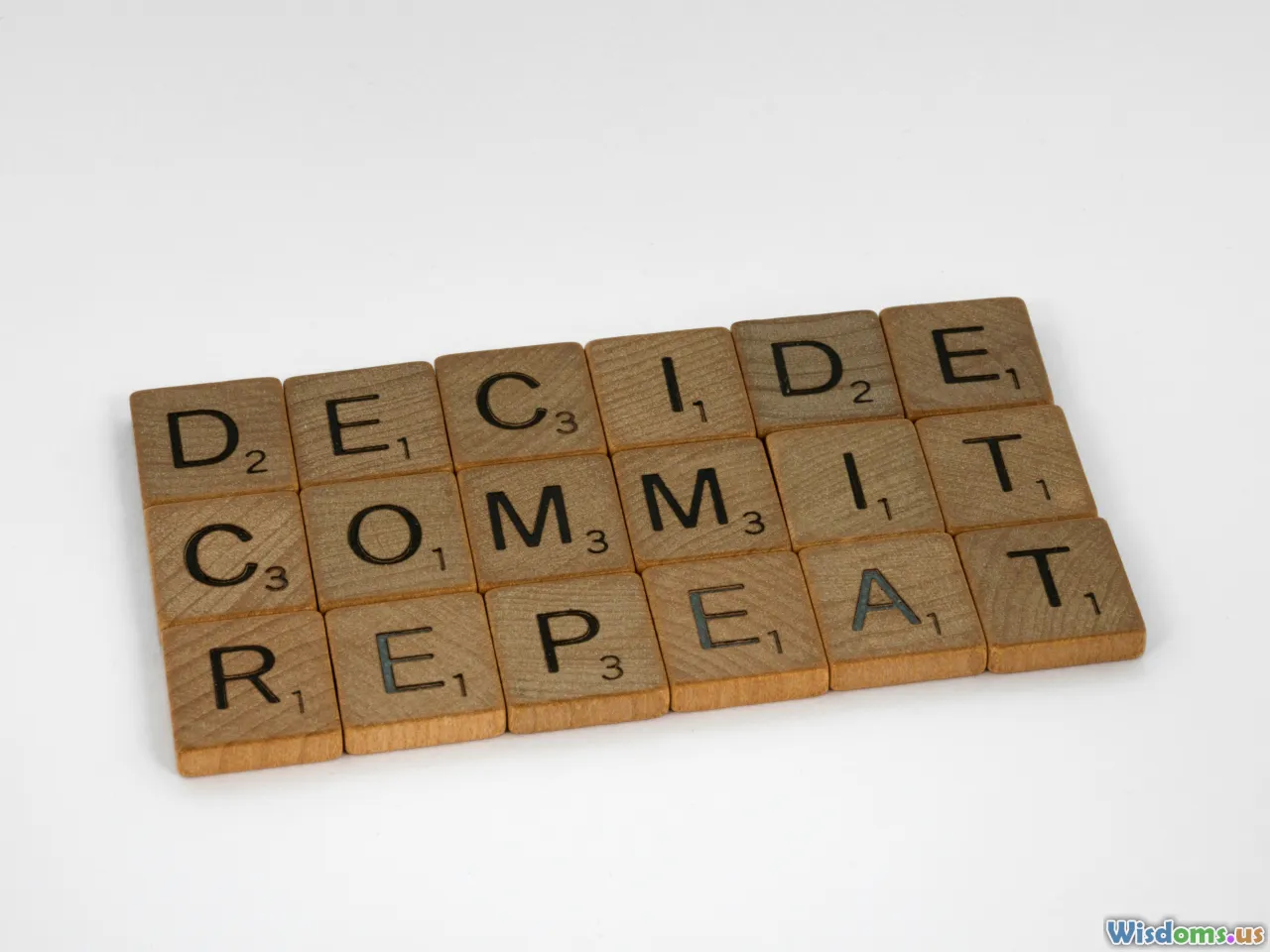
Why Most Americans Ignore Disability Insurance and Regret It
19 min read Explore why Americans undervalue disability insurance, the consequences of ignoring it, and actionable steps for better financial protection. (0 Reviews)
Why Most Americans Ignore Disability Insurance and Regret It
It’s easy to view insurance as a list of boxes to check off: health, auto, life. Yet amid home policies and IRA contributions, there’s one crucial safety net that sits forgotten—disability insurance. While the likelihood of experiencing a disabling injury or illness during a working career is far higher than people imagine, most Americans neglect this coverage. The regret often comes much later, underscoring the gap between perception and reality, and highlighting lessons everyone can learn before it’s too late.
The Stark Reality of Disability Risk

Ask the average worker about their chance of suffering a disability, and most will believe it’s minuscule. The truth is far more sobering: according to the Social Security Administration, around one in four 20-year-olds will become disabled before retirement age. More unexpectedly, the majority of long-term disabilities are caused not by accidents, but by illnesses like cancer, heart disease, or musculoskeletal disorders.
Despite these facts, the Council for Disability Awareness reports that fewer than 35% of private-sector workers have long-term disability insurance through work, and those policies often cover only a portion of lost income. An even smaller segment proactively purchases individual disability insurance policies.
Real example: Sarah, a 37-year-old marketing director, stopped working for over 8 months after being diagnosed with multiple sclerosis. Her employer-provided short-term disability ran out after two months, leaving her without income, straining her savings, and leading to massive financial stress. "I thought I was invincible," she says now, reflecting on her earlier confidence that she would always be able to earn a paycheck.
Reasons Why Disability Insurance Gets Overlooked

The neglect of disability insurance isn’t due to a single cause. Instead, several subtle factors combine to make it easy to ignore:
- Misconceptions about Risk: Many believe they're more likely to die prematurely (life insurance risk) than become temporarily or permanently disabled. In reality, statistical analysis says otherwise.
- Overconfidence: There's a prevailing cultural bias toward self-reliance and an optimism bias—the belief that disability won’t happen "to me."
- Complexity and Fine Print: Disability insurance products come with jargon, exclusions, elimination periods, and distinctions between short-term and long-term options. Individuals are often overwhelmed, leading to procrastination.
- Paralysis by Paperwork: Applying for disability insurance often involves medical exams, detailed salary verification, and complicated forms, unlike the easier group options of health or life insurance.
- Reliance on Employer Coverage: If disability coverage is offered, employees often assume it’s sufficient—unaware of its limitations or the gaps that could render them vulnerable.
A 2021 LIMRA survey showed only 14% of Americans felt very confident in their understanding of disability insurance, indicating substantial confusion.
Financial Fallout: Real Cases of Regret

Disability doesn’t only derail physical health—it has seismic impacts on personal finances, careers, and families. The overwhelming regret among those who face unexpected disability and lack coverage is best understood through firsthand stories.
- John’s Story: John, a self-employed software consultant, disregarded purchasing private disability insurance because of the extra cost. After a debilitating back injury kept him from his desk for a year, his business dissolved, and he was forced to drain his retirement account just to pay bills.
- Amanda’s Family: Amanda, a nurse and primary breadwinner, relied solely on the group short-term disability benefit provided by her employer, which expired after 12 weeks. Cancer meant she was out of work for nearly a year, and her husband became the full-time caregiver. The family relied on friends and GoFundMe donations to survive.
- Statistics: A Bankrate study found that over 60% of American families are one paycheck away from financial hardship. When wages stop flowing due to a health crisis, families can quickly default on mortgages, rack up credit card debt, or sell assets at a loss.
Long-term, the compounding effect of missed career opportunities, lost promotions, and drained savings can shift life trajectories for years, proving prevention is far better than scrambling after the fact.
Why Employer-Provided Disability Insurance Isn’t Enough

Many believe that checking the box for group disability coverage at work is sufficient safety, but this assumption is dangerously incomplete.
- Limited Replacement Rates: The typical group policy only covers 50–60% of base salary—and often does not include bonuses or commissions. Worse, those benefits may be subject to income taxes if the employer pays the premium.
- Cap on Monthly Payments: Many plans cap benefits at $5,000 or $10,000 per month, which can be a steep cut for high earners or those with expensive urban lifestyles.
- Loss of Coverage: Group coverage is tied to employment. Lose your job—because of the disability, company layoffs, or quitting—and the coverage disappears.
- Fine Print: There are often strict definitions of disability and exclusions for pre-existing conditions, mental health, or self-inflicted injuries.
Example: Jake, a software project manager, was covered by his company’s LTD plan. When chronic migraines rendered him unable to work, he learned his plan only paid on total disability, not partial—meaning he received nothing unless he was incapacitated for all work duties. Partial and residual benefits, which kick in if you can work only part-time, are limited in most standard group contracts.
Actionable Advice: How to Evaluate and Improve Your Protection

Sidestepping future regret means acting today. Here are steps to assess and strengthen your own safety net.
1. Access Your Risk Profile
- Assess your savings and family’s reliance on your income.
- Consider mortgage/rent commitments, dependent children, student and credit card debt, and the stability of your spouse’s earnings.
- Use the Council for Disability Awareness “Personal Disability Quotient” calculator online to estimate your odds.
2. Audit Employer Coverage
- Review your group policy details—amount, duration, exclusions, waiting period.
- Ask HR or your benefits administrator about partial or residual disability clauses.
- Plan as if you’ll need more: industry rule-of-thumb is to protect at least 60–70% of take-home pay.
3. Research Individual Disability Policies
- Compare quotes from major insurers (Guardian, Principal, MassMutual, Ameritas).
- Look for “own occupation” policies, which pay benefits if you can’t perform your specific profession, not just any job.
- Consider adding riders for cost-of-living adjustments, future purchase options, and partial disability.
4. Perform a Cost-Benefit Analysis
- Disability insurance premiums often range from 1%–3% of your annual salary.
- Compare this investment with your assets at risk, the cost of self-insuring, and the knock-on effects of career derailment.
5. Consult an Independent Agent, Not a Captive One
- Independent agents can comparison-shop and are not limited to a single company’s products or sales quotas.
- Discuss policy structure, claims process, and customization to your field/needs.
6. Don’t Wait—Age and Health Matter Most
- Policies are more affordable and attainable when purchased young and healthy.
- Pre-existing conditions get excluded, or result in increased premiums or denial, if you apply after a diagnosis emerges.
Addressing Common Disability Insurance Myths

Misconceptions fuel inaction. Clearing up these myths is pivotal.
- "It Covers Freak Accidents, Not Illness." Fact: Over 90% of claims are due to illnesses such as heart disease, cancer, depression, or chronic pain, not injuries from accidents.
- "My Job Isn’t Dangerous, So My Risk Is Low." Fact: Many disabilities stem from non-work-related causes—back issues, autoimmune disease, viral illnesses—that can strike anyone.
- "Disability Insurance Is Too Expensive." Fact: While not free, many spend far more insuring their smartphone or pet each year. For most, the monthly cost is similar to a streaming subscription, especially for younger workers.
- "Social Security Disability Will Save Me." Fact: Fewer than 40% of Social Security Disability Insurance (SSDI) applicants are ever approved, and the application process can take years. Average benefits are less than $1,500/month—well below what most families need.
- "I Can Rely On My Savings/Emergency Fund." Fact: The Federal Reserve reports that 40% of Americans cannot cover a $400 emergency with savings. Few can self-insure for months, let alone years, out of work.
Life Stage Strategies: From Single Adults to Families

How and why to approach disability insurance changes through each life phase.
Young Professionals (20s–30s)
- Least likely to imagine becoming disabled, but the cheapest time to buy robust coverage.
- Consider policy portability, so it stays with you if you change jobs; prioritize “own occupation” definitions if you’re in a specialized field (e.g., medicine, law, engineering).
- Student loan protection riders are valuable for those with significant educational debt.
Mid-Career Adults (30s–50s)
- Re-evaluate group plus individual policies as lifestyle and families expand.
- Consider higher monthly benefit caps and cost-of-living adjustment riders to account for inflation and increased family needs.
- Review how life events (marriage, home purchase, childbirth) impact needed coverage.
Pre-Retirees (50s–60s)
- Premiums increase with age and declining health; locked-in benefit periods may be reduced, so analyze the cost-effectiveness if you’re within a decade of retirement.
- Focus on building up an emergency fund and other self-insurance as a supplement if policies lapse or become too costly.
Professionals at Highest Risk: Beyond Physical Labor

While blue-collar jobs and skilled trades (e.g., construction, trucking) are often viewed as risky, professionals in high-earning fields should not overlook their susceptibility to disabling events.
- Medical and Dental Professionals: Procedures require fine motor skills. Even minor, temporary injuries can lead to weeks of lost income. Own-specialty coverage is crucial. The American Dental Association estimates nearly 30% of dentists experience a disability in their career.
- Lawyers and Accountants: High-stress environments increase risk for mental health-related disabilities, which aren't always covered under standard policies.
- Consultants and Entrepreneurs: Income can be highly variable and difficult to substantiate in a claim. Specialist policies help bridge these challenges, but require extra paperwork and foresight in coverage selection.
Case in point: Dr. Patel, an orthopedic surgeon, protected her $400,000 annual income with a $16,000/month own-specialty disability policy. After a nerve injury required nine months away from surgery, her mortgage, student loan payments, and financial security remained intact.
Navigating the Claims Process—What to Know Before You Buy

When disaster strikes, successfully navigating a claim can be as daunting as any medical battle. Know these tips ahead of time:
- Keep Thorough Documentation: From policies to doctor visits, keep everything in one secure location.
- Communicate Promptly: Notify the insurer as soon as a disabling event occurs. Delays can jeopardize claims.
- Understand Waiting Periods: Most policies contain "elimination periods"—the time between your last day worked and when benefits start—ranging from 30 days to 6 months.
- Be Detailed: Provide clear proof of lost income, job duties, and limitations. Insufficient substantiation can stall or deny claims.
- Consult Professionals: Legal or advocacy groups specializing in insurance disputes can offer crucial help if a claim is unfairly delayed, denied, or disputed.
These practical steps can make the difference between prompt payments and endless paperwork frustration.
Overcoming Psychological Barriers to Action

Public health research confirms that telling people about statistics or even dramatic stories isn’t always enough to prompt behavior change.
- Acknowledge Discomfort: Choosing the right policy means confronting uncomfortable possibilities; recognize and accept the topic’s gravity rather than avoiding it.
- Share Real Stories: Talk to friends or colleagues who’ve benefited from having or lamented not having disability insurance. Personal relatability motivates action.
- Set a Deadline: Treat insurance selection as a priority item rather than letting it drift on your to-do list.
- Small Steps Matter: Start by reviewing group benefits or asking an HR representative; even a single phone call can start momentum.
A simple prompt—younger Americans are much more likely to own pet or smartphone insurance than disability policies—can highlight the upside-down priorities we often have.
Building True Financial Resilience

Disability insurance is not about pessimism, but about preparing for the unforeseen and protecting goals you’ve spent years constructing. Most who regret not purchasing adequate coverage emphasize they never imagined misfortune would land at their door.
Accidents, major illness, and unfortunate medical diagnoses don’t check net worth, ambition, or age. By learning from the overlooked statistics and personal regrets of others, today’s workers and their families can secure their futures and their peace of mind.
Take the first step now: review your coverage, correct misconceptions, and have the necessary conversations. The comfort of knowing you can weather any storm is the true reward—and, with informed action, there’s no need for regret.
Rate the Post
User Reviews
Popular Posts



















